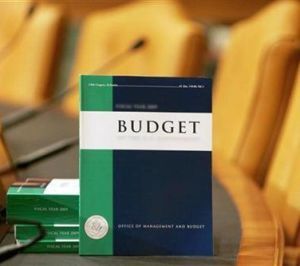 The only silver-lining in the Budget was that the government was open to infuse more capital as and when needed.
The only silver-lining in the Budget was that the government was open to infuse more capital as and when needed.
The Union Budget is credit negative for public sector banks as lower capital infusion announced by the government will be insufficient for lenders in a rising non-performing assets scenario, global rating agency Moody's said on Tuesday.
The government has stuck to the capital infusion roadmap that was announced last year, budgeting only Rs 25,000-crore (Rs 250-billion) capital injections for the public sector banks in the fiscal 2016-2017.
As per Capitaline data, gross non-performing assets of 39 listed banks surged to Rs 4.38 lakh crore (Rs 4.38 trillion) in the December quarter, up from Rs 3.4 lakh crore (Rs 3.4 trillion) in the September quarter.
Most of them are contributed by state-run banks.
The only silver-lining in the Budget was that the government was open to infuse more capital as and when needed.
"The Budget is largely credit negative for public sector banks as the planned capital allocation for the coming fiscal year will likely be insufficient because of the sector's increased recognition of NPAs," Moody's said in a report.
It further said increasing recognition and provisioning for NPAs will require a corresponding front-ending of capital requirements.
According to the agency, public sector banks will complete NPAs recognition by the end of fiscal 2016-17 (i.e. they will classify all existing weak large corporate accounts, as well as restructured accounts, as NPAs) and have a loan-loss coverage of 70 per cent on this enlarged book.
"Under such a scenario, they would report losses of around Rs 74,900 crore (Rs 749 billion) over this period.
“With this in mind, capital constraints will remain a key credit weakness for the public sector banks," the report said.
Leaving aside capital allocation, there are some measures in the Budget that are likely to be mildly credit positive for the banking sector upon implementation.
A roadmap for the consolidation of public sector banks will be outlined during the year.
"Such a move would be a structural positive, as it would reduce the number of banks from the currently unwieldy 21 and potentially enhance operational efficiency in the sector," it added.
It further said the plan to improve operating conditions for asset reconstruction companies will help attract more investors to the asset class, which would expedite the resolution of bad assets and support asset quality in the banking sector.
Investors in ARCs will be allowed to hold up to 100 per cent exposure and there will be a complete pass-through of income tax to securitisation trusts, including ARC trusts.
The Budget also outlined plans to strengthen debt recovery tribunals such as through computerised processing of court cases, the report added.









